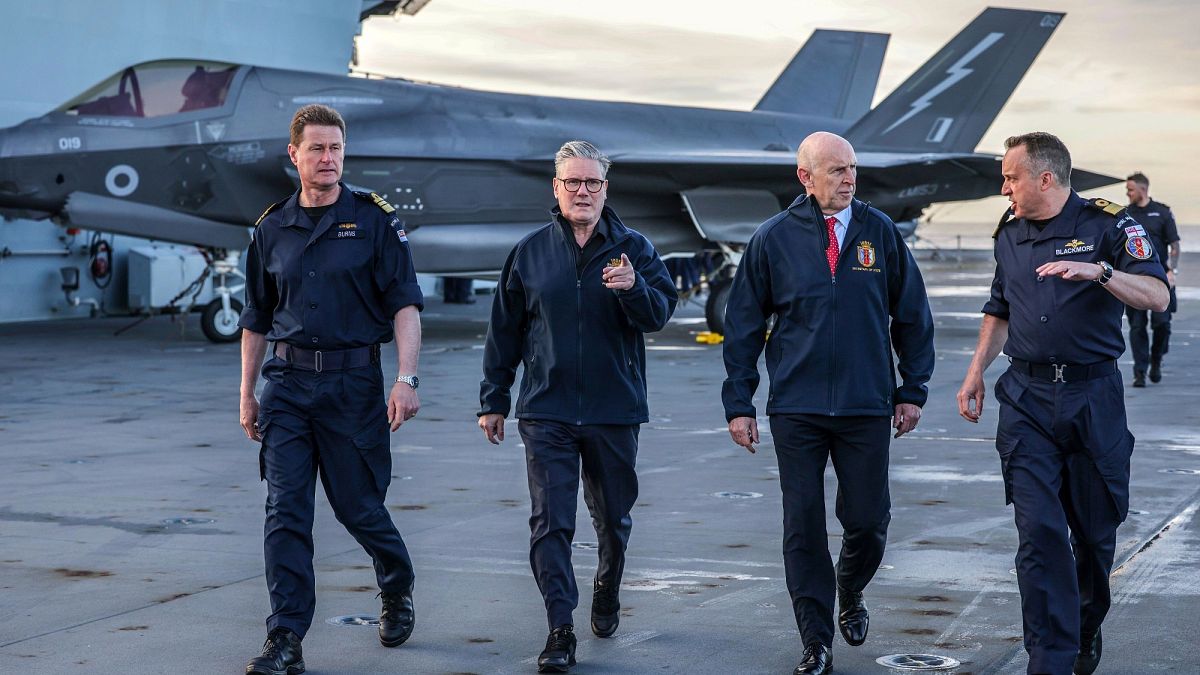Published on •Updated
British Prime Minister Keir Starmer announced on Monday that the UK will build 12 new attack submarines and six new ammunition factories as part of a Strategic Defence Review.
The externally-led review outlines 62 recommendations, which the government endorsed in full, including moving the Armed Forces into a state of “warfighting readiness”.
“When we are being directly threatened by states with advanced military forces, the most effective way to deter them is to be ready, and frankly, to show them that we’re ready to deliver peace through strength,” Starmer said in Glasgow on Monday.
The review, he added, is “a blueprint to make Britain safer and stronger, a battle-ready, bomber-clad nation with the strongest alliances and the most advanced capabilities, equipped for the decades to come”.
The 12 new conventionally armed nuclear-powered submarines will be built as part of the AUKUS programme concluded in 2021 between Australia, the UK, and the US and should all be online by the late 2030s with one built every 18 months, per Starmer.
The programme will be accompanied by a £15 billion (€17.8 billion) investment in nuclear warheads.
Another key plank of the review is the procurement of up to 7,000 UK-built long-range weapons, along with a £1.5 billion (€1.8 billion) investment to build at least six munitions and energetics factories.
One of these production capacities is expected to be “always on” to allow for production to be ramped up quickly to meet the demand of high-tempo warfare, if necessary.
“The hard-fought lessons from Putin’s illegal invasion of Ukraine show a military is only as strong as the industry that stands behind them,” Defence Secretary John Healey said in a statement.
“We are strengthening the UK’s industrial base to better deter our adversaries and make the UK secure at home and strong abroad,” he added.
The government will also put forward £1 billion (€1.2 billion) in a new CyberEM Command to boost cyber operations and digital capability, as well as £1.5 billion of additional funding to repair and renew armed forces housing.
The investments should make some way into Britain’s goal, unveiled earlier this year, to boost defence spending to 2.5% of Gross Domestic Product by 2027 and to 3% in the next parliament.
Britain, a NATO member, will on Wednesday co-chair a meeting of the Ukraine Defence Contact Group, which aims to coordinate military support to Ukraine in response to Russia’s full-scale invasion involving 56 countries.
Defence ministers from the alliance will meet on Thursday to continue talks on increasing the defence spending target from its current 2% of GDP level.
Allies appear to have landed on a 5% of GDP target, a number repeatedly called for by Trump, although it would be split in two: 3.5% of GDP for hard military spending, and a further 1.5% on defence-related spending including, for instance, infrastructure and cybersecurity.
The new target will be endorsed by NATO at a summit in The Hague later this month.
Starmer defended his aim to bring defence spending to 3% in the next parliament, therefore below the 3.5% by 2032 that NATO is set to agree on.
“Everything we do will add to the strength of NATO,” he said. “The NATO alliance means something profound, that we will never fight alone. It is a fundamental source of our strategic strength”.
The transformation we’re driving in our defence must add up to Britain’s biggest contribution to NATO since its creation,” he added.

